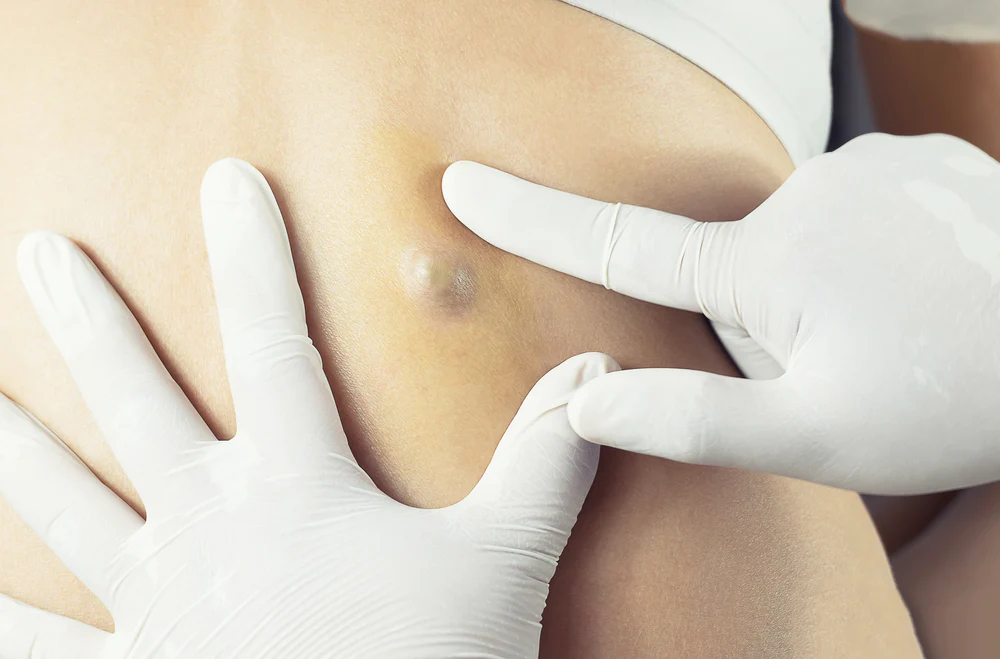Cysts are growths that are not cancerous and can happen anywhere on the body. They can be as big as a big lump or as small as a small bump. They can be filled with liquid, semisolid material, or air. While cysts are usually harmless, they can become painful or contaminated, which is why many people opt to have them removed.
Why do cysts happen?
Cysts don’t always have a clear cause, but they can be caused by a number of things, such as:
Genetics: Some cysts can be passed down from parent to child.
Changes in hormones: Changes in hormones, like those that happen in the ovaries, can cause cysts to form.
Trauma: Injuries or damage to the skin can cause cysts to develop.
Diseases: Bacterial or fungal Diseases, for example, can cause cysts to form.
Symptoms of Cysts: Most cysts are asymptomatic, which means they don’t cause any symptoms. However, in some cases, they can become painful, red, or contaminated, causing discomfort.
Treatment Options: Most cysts do not require treatment, as they are harmless and do not cause any symptoms. But a cyst may need to be taken out if it hurts, is contaminated, or is growing quickly. Some of the most common ways to treat cysts are:
Treatments excision: A cyst can be removed by making a small cut in the skin and taking out the whole thing.
Drainage: If a cyst is full of fluid or semisolid material, it can be drained.
If a cyst doesn’t hurt or cause any other problems, it can be watched and left alone.
Cysts are noncancerous growths that can happen anywhere on the body and can be filled with fluid, semisolid material, air, or a combination of the three. Cysts don’t always have a clear cause, but they can be caused by things like genetics, hormonal changes, trauma, and Diseases, among other things. Most cysts don’t need to be treated, but they may need to be taken out if they hurt, are contaminated, or are growing quickly. If you are worried about a cyst, see a dermatologist at Revitalise London Dermatology Clinic to get a proper diagnosis and treatment plan.

